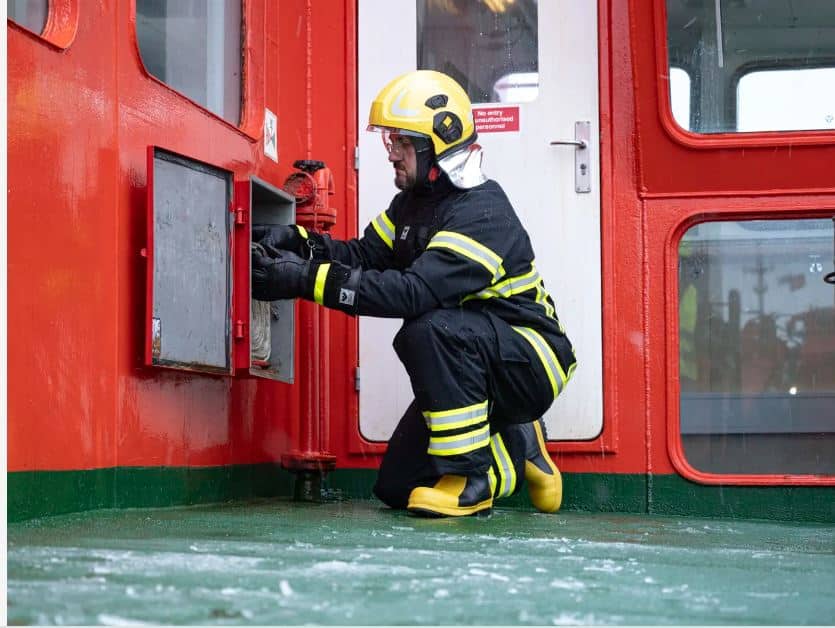The firefighting industry hasn’t stood still in recent years. One change after another has been implemented—and protective clothing hasn’t been forgotten. International regulations are being updated, and manufacturers are continuously developing new techniques and materials to improve gear. In 2025, simply meeting the bare minimum requirements is no longer enough.
Standards and Materials
Alongside regulatory changes in the United States, Europe is also reviewing its requirements for protective firefighting gear. Since August 2024, suits have had to comply with the EN469:2020 standard. However, starting next month, a new regulation will be added. From June 2025, the updated Regulation (EU) 2024/1975 of the Marine Equipment Directive (MED) will come into effect.. This means firefighting suits used on ships must comply with ‘level 2’ standards, offering enhanced protection against heat, water penetration, and ensuring better breathability.
Although Kevlar and Nomex remain the primary materials used in firefighter gear, other materials are increasingly being incorporated. These include blends such as PBI (polybenzimidazole) and Lenzing FR, which offer higher heat resistance and increased strength. Since they are also lightweight and breathable, these materials are ideal for modern firefighting gear.
Meanwhile, more suppliers are being compelled to reconsider their materials due to growing demand for PFAS-free (Per- and polyfluoroalkyl substances) firefighter PPE. Studies have shown that PFAS can cause cancer and other health issues.
People Want Change
It might be hard to imagine, but beyond developing gear that is healthier, stronger, lighter, more breathable, and more protective, there are still additional ways to optimize firefighting equipment. For example, nanotechnology is being used to make firefighting suits even lighter. Australian researchers have developed a special coating that not only enhances fire prevention but can also provide antibacterial functions for PPE in healthcare. Meanwhile, researchers in China have shown that nanotechnology can also improve moisture permeability.
The question that remains is whether the people wearing these suits are open to the new materials and technologies the market has to offer. RWTH Aachen University, in collaboration with KAN and the Institute of Fire Service and Rescue Technology (IFR) in Dortmund, Germany, conducted a study on this topic. They surveyed 150 firefighters from volunteer, municipal, and professional fire services across Germany. The results showed that 95% of respondents found PPE with smart functions useful—especially features like location tracking (85%), ambient temperature monitoring (85%), and heart rate tracking (70%). Furthermore, 55% said they would trust smart features over their own perception.
With these figures in mind, it only makes sense for the market to continue pushing forward with new innovations. Not only are we interested in these advancements ourselves, but the users are eager for even more intelligent solutions.




















